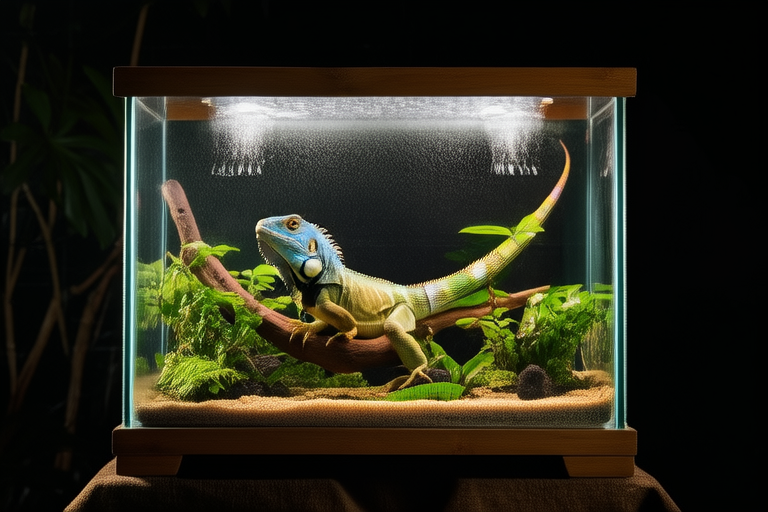DIY Guide: Building an Ideal Enclosure for Your Colorful Companion!
Welcome to this comprehensive DIY guide on creating a safe, comfortable, and aesthetically pleasing enclosure for your colorful companion! Whether you have a bird or fish, this guide will walk you through the steps to build an enclosure that promotes your pet’s health and happiness. We’ll cover everything from materials and tools to safety tips, design considerations, and maintenance.
Materials Needed
- For Bird Enclosures:
- Wire mesh (preferably stainless steel)
- Wooden dowels or perches
- Toys (ensure they’re made from safe materials)
- Non-toxic paints or varnishes
- Plastic or metal hardware (screws, nuts, bolts)
- Food and water dishes
- For Fish Tanks:
- Acrylic or glass tank
- Filter system
- Air pump and air stones
- Gravel or substrate
- Plants (real or artificial)
- Decorative rocks or driftwood
- Water treatment products
- Lighting system
Tools Required
- For Bird Enclosures:
- Measuring tape
- Screwdriver
- Hacksaw or wire cutters
- Drill with appropriate bits
- Paintbrushes
- Clippers for trimming perches
- For Fish Tanks:
- Level
- Utility knife
- Scissors
- Channel locks
- Bucket
- Plastic container
- Wet/dry vacuum
Safety Tips
Before starting any project, ensure you have the necessary safety gear, such as gloves, goggles, and masks. Always follow the manufacturer’s instructions when handling chemicals and power tools. For bird enclosures, avoid using materials that could release harmful fumes. For fish tanks, ensure proper ventilation and handle the tank with care to prevent spills.
Design Considerations
Bird Enclosures
When designing a bird enclosure, consider the size, shape, and location. The enclosure should be large enough to allow your bird to spread its wings and move around comfortably. Ensure there is plenty of space for perches, toys, and food and water dishes. Place the enclosure in a well-lit area but away from direct sunlight and drafts. Incorporate various textures and heights to stimulate your bird’s natural behaviors.
Fish Tanks
Choose a tank size based on the number and species of fish you plan to keep. A general rule of thumb is one gallon of water per inch of fish. Position the tank away from windows to prevent temperature fluctuations and direct sunlight. Ensure the tank has proper filtration, lighting, and heating systems. Decorate with plants, rocks, and driftwood to mimic a natural environment.
Maintenance Tips
Bird Enclosures
Regularly clean the enclosure, including perches, toys, and food and water dishes. Replace bedding material as needed. Monitor your bird’s health and behavior, and adjust the enclosure as necessary. Provide fresh food and water daily, and offer new toys and activities to prevent boredom.
Fish Tanks
Perform regular water changes and clean the filter. Test the water quality regularly and adjust as needed. Feed your fish a balanced diet and monitor their behavior. Trim plants and remove any debris. Keep the tank free from algae by using algae-eating fish or manual cleaning tools.
Creativity in Decoration
Emphasize creativity in decorating your pet’s enclosure while ensuring all elements are non-toxic and pet-safe. For bird enclosures, use natural fibers, untreated wood, and safe paints. Incorporate vibrant colors and patterns to stimulate your bird’s senses. For fish tanks, choose decorative rocks, driftwood, and plants that enhance the underwater environment. Use LED lights to create dynamic lighting effects.
Alternative Enclosure Ideas
Space-Conscious Options
If you have limited space, consider vertical enclosures or corner units. These designs maximize available floor space and provide ample room for your pet. Choose compact models for smaller pets or opt for modular systems that can be expanded over time.
Budget-Friendly Alternatives
Explore budget-friendly options like second-hand enclosures or repurposed materials. Look for sales or clearance items at pet stores or online marketplaces. DIY projects using affordable materials can also save money while allowing for customization.
Outdoor Enclosures
Consider building an outdoor aviary or pond for your bird or fish. Ensure the enclosure is secure and protected from predators. Provide shade, shelter, and access to fresh water. Regularly check for signs of wear and tear, and maintain the enclosure to prevent leaks or structural damage.
Conclusion
Building an ideal enclosure for your colorful companion requires careful planning, attention to detail, and a commitment to your pet’s well-being. By following the steps outlined in this guide, you can create a safe, comfortable, and aesthetically pleasing environment that promotes your pet’s health and happiness. Remember to prioritize safety, functionality, and creativity in your design, and enjoy the rewarding experience of caring for your colorful friend.
